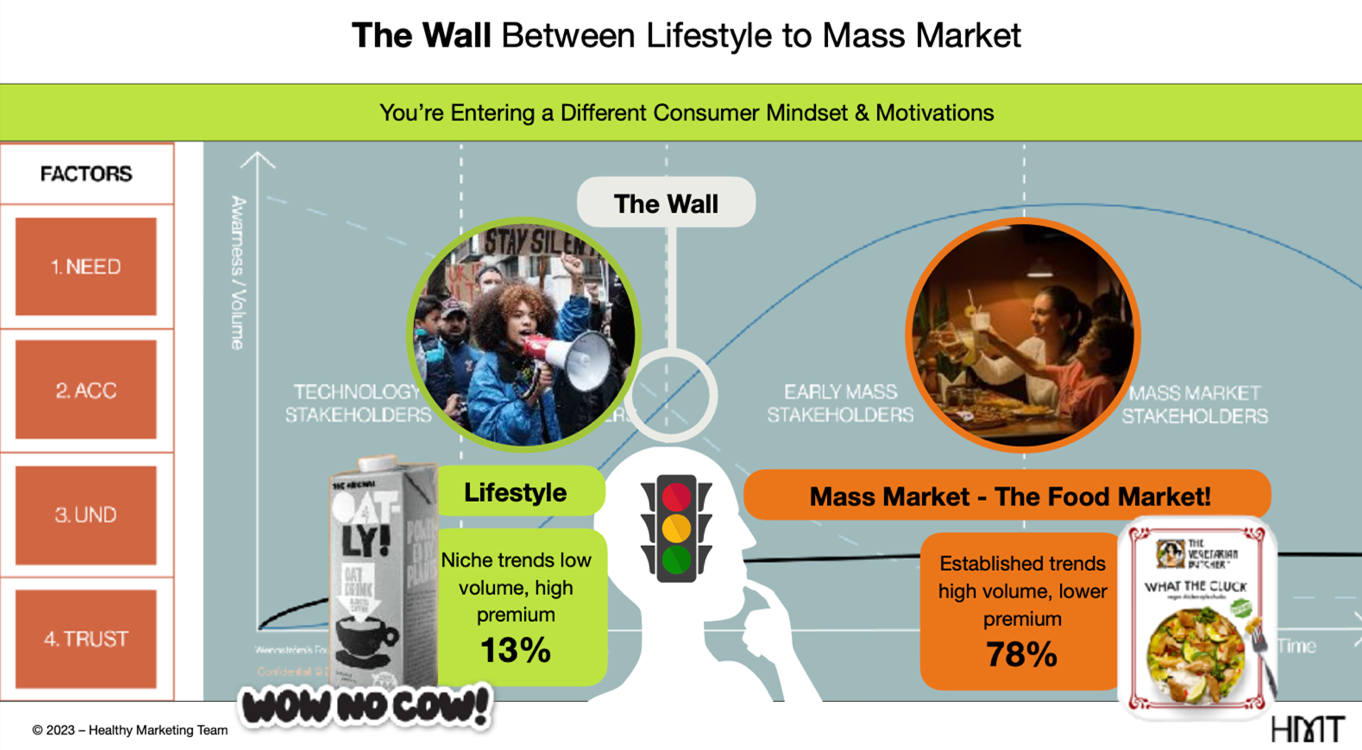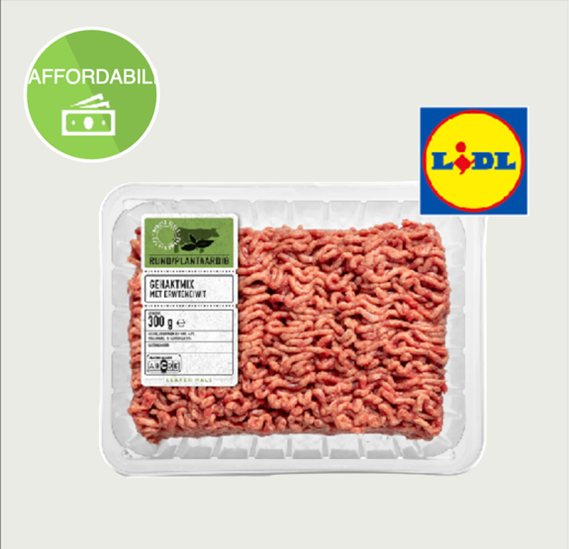Insights from HMT Webinar with Gira:
Cracking the Code in the Hybrid Dairy & Meat Market

In our recent webinar, Founder of HMT, Peter Wennström, and Gira’s industry experts explored the opportunities and challenges surrounding hybrid food products. As the hybrid food market continues to evolve, companies must navigate consumer expectations, category positioning, and the balance between innovation and familiarity. Can we position hybrid foods as the new hybrid cars?
Takeout #1: The Wall Between Lifestyle and Mass Market
There is no one-size-fits-all approach. There are four key consumer segments, each with unique needs and expectations. Hybrid foods appeal to different consumer segments, winning in hybrid means understanding which segment to target.
” There is actually a fundamental wall between lifestyle and mass market.” – Peter Wennström, Founder HMT

“The Wall” separates lifestyle-driven consumers from the mass market. You’re entering a different consumer mindset and motivations. While lifestyle consumers prioritize sustainability and ethical concerns, mass-market consumers focus on taste, affordability, and familiarity. And while consumers in the lifestyle segment are often willing to pay a premium for niche products, mass-market consumers prioritize convenience, price, and established food trends.


Many hybrid products fail because they stay in the niche and fail to adopt to the mass market. The rules change between niche and mass market. Hybrid products are pushed by the industry rather than demanded by consumers. They often lack a clear benefit and fail to solve a real need.
Takeout #2: The Importance of Category Positioning
For hybrid foods to succeed, they must overcome key barriers such as lack of awareness, acceptance, and familiarity. At the same time, they must leverage triggers like trust, taste, and availability.
Currently, hybrid foods have a problem with category regonition. Why should consumers consume hybrid? A lack of clear benefit and real consumer need seems to be missing. For hybrid foods to thrive, they must be positioned clearly within a category that consumers recognize and trust.
Three Steps for Innovation Success
- Clarify the category: What is it? Can we clarify to the consumer what hybrid means exactly?
- Define the need for the product: Who needs it, when, and why? If your product doesn’t solve a real problem, it won’t succeed
- Be clear on WHY it solves a consumer dilemma: Better taste, price, functionality, health, or sustainability?
Hybrid Product Launches: Success or Failure?
- Arla Milk & Oats struggled due to a lack of category recognition. They failed to solve a real consumer need. Consumers weren’t sure whether to view it as a dairy alternative, a meal replacement, or a snack. The lack of acceptance and familiarity of the product leaded leading to confusion.

- Lidl Hybrid Minced Meat succeeded by addressing two consumer concerns: affordability and sustainability. Their meat maintains the taste and texture that mass-market consumers expect, while offering a lower price point and a more sustainable alternative. Instead of positioning as a niche hybrid product, Lidl positions their product as the easy switch for price-sensitive shoppers who still want real meat but with added benefits.

- Danone’s Danao became popular in emerging markets due to its strong nutritional positioning. Their blend of refreshing taste of juice with the nutritional benefits of milk gained consumer acceptance and lasting success in specific regions.

- Arla’s Bregott succeeded because it solved a clear consumer problem – traditional butter was too hard to spread when stored in the fridge. Blending cream with rapeseed oil retained the taste and texture of butter while offering the added convenience of easy spreading. Instead of marketing itself as a ‘hybrid food’, it seamlessly integrated into the butter category. By solving a consumer problem, Bregott was able to make their butter a natural choice for consumers rather than a nice alternative.

Hybrid as the Future of Food
Hybrid food products have the potential to reshape the future of food, but only if they’re positioned clearly and solve real consumer needs. Success lies in understanding the difference between lifestyle and mass-market consumers, clarifying the category, and delivering tangible benefits like taste, affordability, and functionality. As shown in the webinar, innovation alone isn’t enough, hybrid products must earn their place in consumers’ daily lives.
Want to dive deeper?
Watch the full HMT x Gira webinar to explore the insights and case studies discussed, and don’t miss their latest article sharing insights from the webinar.
Coming up next:
In our next article, we’ll turn insights into impact by sharing actionable strategic steps to help brands succeed in the hybrid food space.

Peter Wennström
Founder and expert consultant at HMT

Marit Veenstra
Brand & Innovation Strategist at HMT

Laurène Bajard
Food Market Consultant at Gira

Mylène Potier
Ingredients Director at Gira